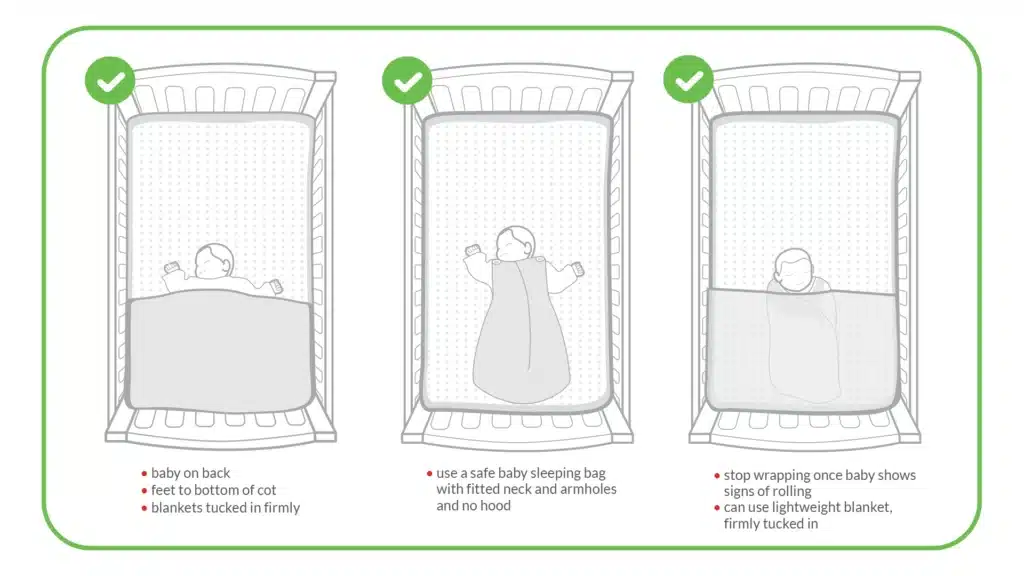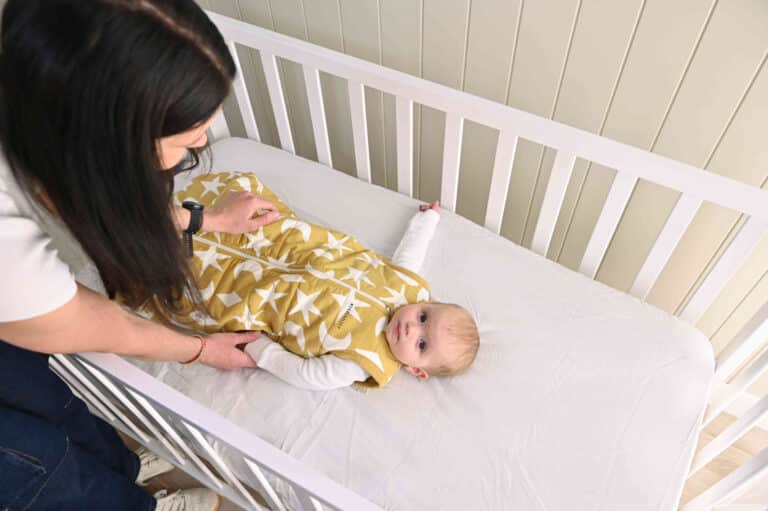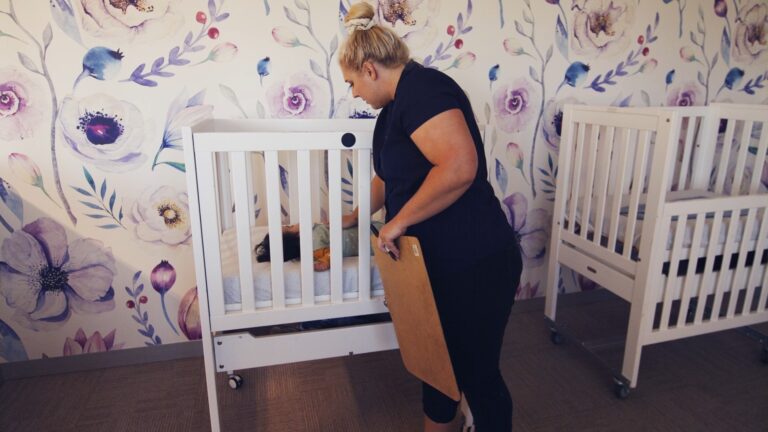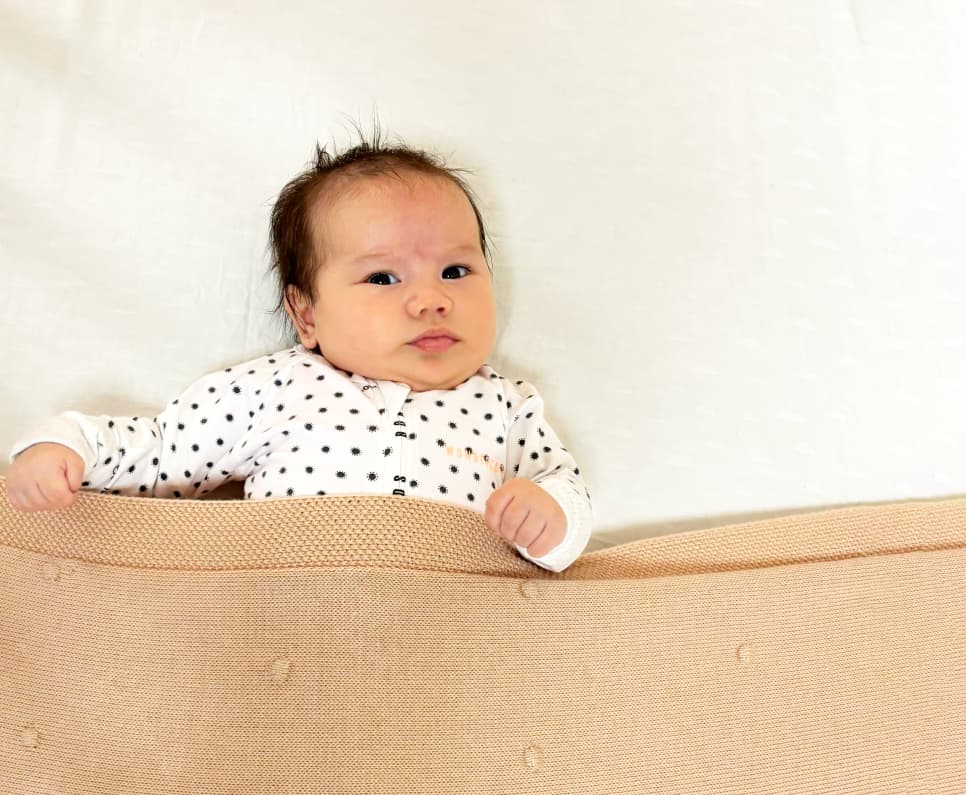Here at Red Nose, one of our key safe sleeping recommendations has been to place baby on their back to sleep from birth. It’s a recommendation that has largely contributed to an 80% reduction in SIDS deaths since the 1980s.
When a baby is sleeping on their back, the tube that carries air to the lungs sits above the tube that carries food from the mouth to the stomach. Babies protect their airways by swallowing. When they are on their back, regurgitated milk pools at the back of the throat and can be easily swallowed.
It is actually difficult for the fluid to work against gravity and be pushed up and into the airways when babies are lying on their back. This is why the risk of choking is reduced when baby is sleeping on the back.
It is a misconception that a baby can choke on vomit while sleeping on their back.
Babies also sleep more deeply on their tummy and swallow less frequently.

Follow our evidence-based safe sleeping steps to reduce your risk
Did you find this helpful?
Good job! Please give your positive feedback
How could we improve this post? Please Help us.


